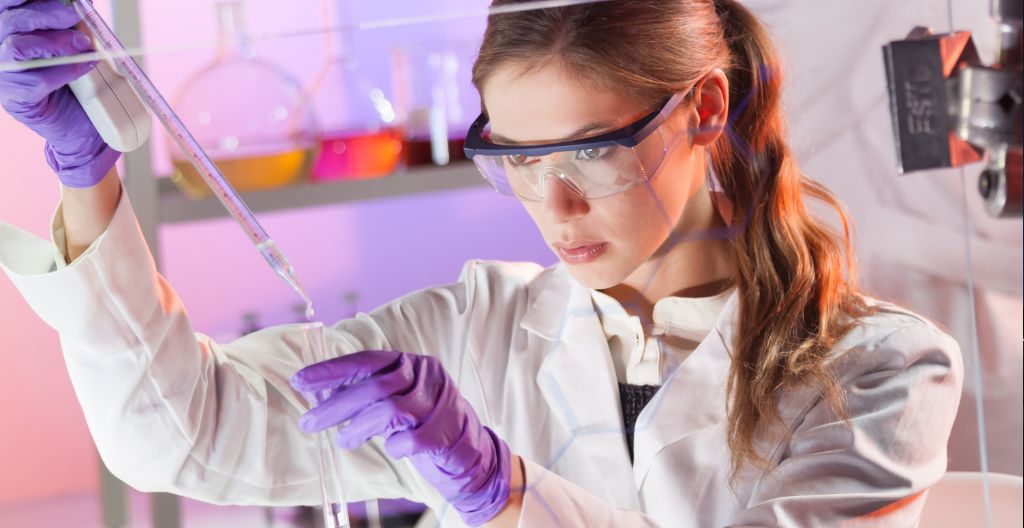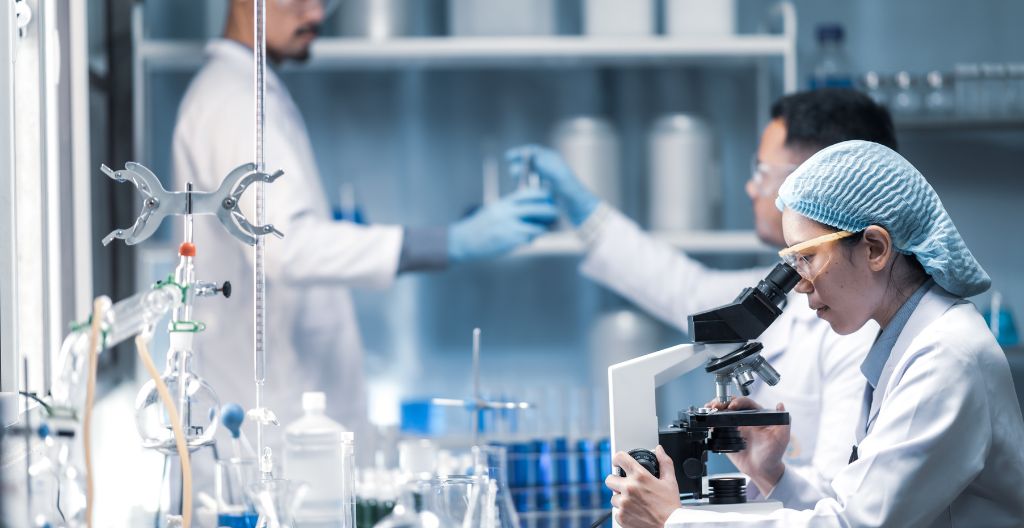‘Life Sciences Demystified: A Comprehensive Guide’ provides an expansive overview of the diverse field of life sciences.
It explores distinct branches such as zoology, botany, and microbiology, and delves into applied sciences and emerging technologies.
This guide serves as a critical resource for novices and seasoned learners, offering insights into the intricate world of genetics, ecological systems, and future trends in life sciences.
Key Takeaways
- Biotechnology is a versatile tool used to solve global problems, including the production of food, medicines, and vaccines.
- North Carolina has experienced significant growth in the life sciences industry, with a large number of companies and skilled workers in the field.
- Biotechnology plays a crucial role in advancing the life sciences industry by contributing to the development of new treatments, precision medicine, and technological advancements.
- The field of life sciences encompasses various branches, such as zoology, botany, genetics, microbiology, and molecular biology, each focusing on different aspects of living organisms.
Understanding the Scope of Life Sciences
The scope of Life Sciences, a multifaceted field of study, encompasses diverse branches such as Biotechnology, Microbiology, and Genetics, all contributing significantly to our understanding and enhancement of life processes.
As we delve into the definition of life sciences, we find that it is an extensive field focusing on the study of living organisms, their structure, functions, and processes. When asked, ‘what is life science?’, one could say it is a discipline that explores all aspects of life, from the microscopic genes in our bodies to complex ecosystems.
Biotechnology leverages life science principles for practical applications in health and agriculture.
Microbiology studies the microscopic organisms that have a large impact on our world, whereas Genetics investigates the hereditary information in living organisms.
The Role of Biotechnology in Life Sciences
Drawing upon the principles of various scientific disciplines, biotechnology paves the way for significant advancements in the field of life sciences. It offers innovative solutions in areas such as healthcare, agriculture, and environmental management.
Biotechnology harnesses cellular and biomolecular processes to develop technologies and products that help improve our lives and the health of our planet. It enables the production of biopharmaceuticals, the genetic modification of crops for increased yield and resistance, and the development of biofuels and bioplastics.
Furthermore, biotechnology has a crucial role in the diagnosis and treatment of diseases, contributing to the rise of personalized medicine.
With its vast potential, biotechnology remains at the forefront of scientific breakthroughs, driving the future of life sciences.
What Are the Different Fields of Study in Life Sciences?
From the intricate study of genetics to the vast field of ecology, each branch of life sciences offers a unique lens through which we can explore and understand the complexities of life.
Zoology and botany expose the diverse world of flora and fauna, while anatomy delves into the structures of living organisms.
Genetics unravels the mysteries of inheritance, and ecology reveals how organisms interact with their environment.
Microbiology, mycology, parasitology, virology, and bacteriology illuminate the microscopic universe of life.
Molecular biology, biochemistry, and biotechnology explore life at the molecular level.
Neuroscience, paleontology, marine biology, and biological anthropology are specialized fields that provide further insight.
Agriculture, biomedical science, environmental health, food science, and conservation biology apply this knowledge practically.
Each branch, distinctly significant, collectively paints a comprehensive picture of life.

The Intersection of Life Sciences and Medicine
Understanding the intersection of life sciences and medicine is essential for advancing healthcare. It brings together knowledge from various disciplines such as genetics, molecular biology, and biotechnology and applies it to the development of new treatments and therapies.
This integration allows for a comprehensive approach to patient care. It enables personalized treatment plans based on individual genetic makeup and the creation of targeted therapies for specific diseases.
Moreover, by incorporating life sciences research into clinical practice, we can better understand disease mechanisms. This understanding leads to improved diagnostic tools and preventive measures.
The symbiotic relationship between life sciences and medicine continually propels us forward in our pursuit of improving global health and wellbeing. It showcases the importance of continued investment and innovation in these fields.
Future Trends in Life Sciences
In the ever-evolving field of life sciences, one can anticipate numerous advancements and innovations that will shape the future of healthcare, biotechnology, and environmental studies.
An increasing reliance on artificial intelligence and machine learning is expected, leading to more accurate diagnoses, personalized treatments, and efficient drug development.
Similarly, advancements in genomics and gene editing techniques promise new solutions for genetic disorders.
The emergence of digital health technologies will revolutionize patient care and data management.
Environmental biotechnology will offer innovative solutions for waste management and pollution control.
Lastly, the integration of different life science fields will foster a multidisciplinary approach, enhancing scientific understanding and technological development.
All these trends indicate a promising future for life sciences, marked by significant societal and economic impact.
Sign up for our Life Sciences Newsletter and boost your engagement with HCPs
Conclusion
In conclusion, ‘Life Sciences Demystified: A Comprehensive Guide’ serves as an indispensable resource for understanding the vast scope of life sciences.
It offers insights into various specialized fields and highlights the crucial role of biotechnology.
The guide underscores the profound interplay between life sciences and medicine, while also forecasting future trends.
This ensures a comprehensive understanding of life sciences, paving the way for further research and advancements in this ever-evolving field.
FAQ
What Is the Difference between a Life Science and a Natural Science?
Life science and natural science are both major categories of scientific disciplines, yet they focus on different areas of study. Life science is dedicated to the study of living organisms and their life processes, encompassing fields such as biology, botany, zoology, and genetics. It aims to understand the structure, function, growth, evolution, and distribution of living entities. What is a natural science? on the other hand, is a broader category that includes the life sciences but also encompasses the physical sciences, which study non-living systems. Physical sciences include disciplines such as physics, chemistry, astronomy, and earth sciences. Thus, while life science focuses specifically on living organisms and their interactions, natural science covers both living and non-living matter, exploring the laws and properties of the natural world.
What Is a Scientific Model and How Does it Relate to Life Sciences?
A scientific model is a simplified representation used to explain, understand, or predict phenomena in the natural world. These models can be physical, mathematical, or conceptual, designed to describe complex realities in a more comprehensible manner. In the life sciences, scientific models play a crucial role by allowing researchers to conceptualise biological processes, test hypotheses, and visualize the intricate mechanisms of living organisms.
What Is Life Sciences Content?
Life sciences content refers to the information, data, and knowledge that is related to the study of living organisms and their life processes. This encompasses a wide range of topics within the field of biology and its many sub-disciplines, such as botany, zoology, genetics, microbiology, biochemistry, and ecology. In the realm of scientific content, life sciences content can be found in various formats, including academic journals, textbooks, online courses, articles, and multimedia resources.
What Is Scientific Evidence and How Does It Relate to Life Sciences?
Scientific evidence refers to the information and data collected through systematic observation, experimentation, and analysis that support or refute a scientific theory, hypothesis, or claim. In the context of life sciences, scientific evidence is crucial for understanding the complex processes that govern living organisms and their environments. This evidence is derived from rigorous methods, including laboratory experiments, field studies, clinical trials, and observational research, which aim to ensure reliability and validity.

